|
I have a Let’snote, a Panasonic product and a kind of Toughbook, as my mobile PC. Though I configured the dual-boot system of Windows7 and CentOS6, I destroyed all data on the PC before I sent it for repair. When I got it again, I decided to create a Virtual PC and run CentOS6.4 on it. This post is my remainders and I think it gives some convenient for you guys. (^o^)
First, I create a Virtual PC in Windows7 Home Premium on CF-J10TYAHR.
Second, I install CentOS6.4 on the Virtual PC.
|
(Fig.01)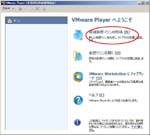 (Fig.02) (Fig.02)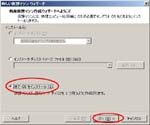 (Fig.03) (Fig.03)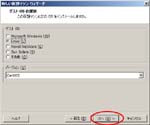 (Fig.04) (Fig.04)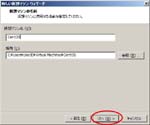 (Fig.05) (Fig.05)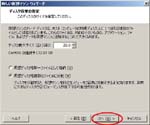 (Fig.06) (Fig.06)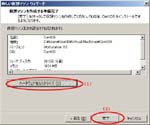 (Fig.07) (Fig.07)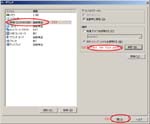 (Fig.08) (Fig.08)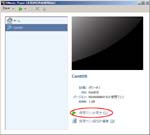 (Fig.09) (Fig.09)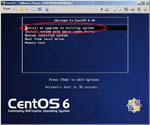 (Fig.10) (Fig.10) (Fig.11) (Fig.11)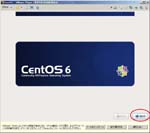 (Fig.12) (Fig.12)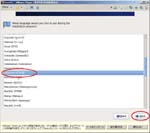 (Fig.13) (Fig.13)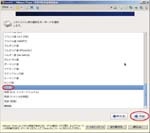 (Fig.14) (Fig.14)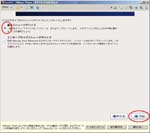 (Fig.15) (Fig.15)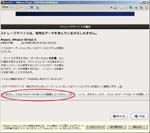 (Fig.16) (Fig.16)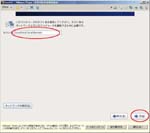 (Fig.17) (Fig.17)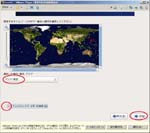 (Fig.18) (Fig.18)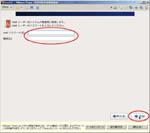 (Fig.19) (Fig.19) (Fig.20) (Fig.20)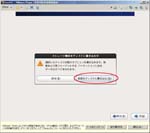 (Fig.21) (Fig.21)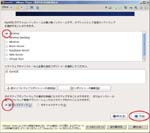 (Fig.22) (Fig.22)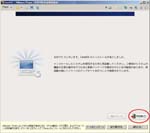 (Fig.23) (Fig.23) (Fig.24) (Fig.24) (Fig.25) (Fig.25) (Fig.26) (Fig.26) (Fig.27) (Fig.27) (Fig.28) (Fig.28) (Fig.29) (Fig.29) (Fig.30) (Fig.30) (Fig.31) (Fig.31) (Fig.32) (Fig.32) |
Category: Uncategorized
Updating to MySQL5.6.11 on Windows.
Update information Edit(Apr.28) Edit(May.6)
Today, I’ve updated from MySQL5.6.10 to 5.6.11 on my WindowsXP SP3(x86) server.
- Backup all data.
- Download mysql-5.6.11-win32.zip
- Extract Zip archive.
- Control Panel >> Administrative tools >> Services
Select the MySQL Service name and stop - Overwrite my old installation by the new one.
In my case, I’ve only installed the next things. Of course, I leave my old my.ini in the directory.- directories
bin
data
include
lib
share - file
COPYING
- directories
- Control Panel >> Administrative tools >> Services
Select the MySQL Service name and start
I’ve also updated to phpMyAdmin3.5.8 because of PMASA-2013-1.
Edit(Apr.28):
I updated phpMyAdmin only a week ago, but, according to PMASA-2013-2 and PMASA-2013-3, 3.5.8 has some vulnerabilities, so I’ve updated to 3.5.8.1 today. Ooops!
Edit(May.6):
They released phpMyAdmin 4.0.0 on Fri, 03 May 2013 12:22:50 GMT.
They say,
- Welcome to phpMyAdmin 4.0.0. With this version, the HTML frames are gone and the navigation panel now presents a tree. This version requires Javascript.
- Version 4.0 contains many bug fixes and smaller new features; moreover, the documentation has a new look and contains an index. Enjoy!
Updating to PHP5.4.14.
Update information Edit(Aug.3)
At Apr-10 22:55:28UTC, they released PHP5.4.14. So, I downloaded a Thread Safe version php-5.4.14-Win32-VC9-x86.zip for my server (WindowsXP SP3(x86)).
Acoording to the ChangeLog, it has 11 bug fixes, and merges PCRE 8.32 (released 2012-11-30). This is a security update, so, they say “All users of PHP are encouraged to upgrade to PHP 5.4.14.”.
As php5apache2_4.dll included in the official PHP binary 5.4.10+, I extracted the zip archive and replaced all PHP5.4.13 files with all PHP5.4.14 files except my php.ini. Then, I restarted my Apache. That’s it.
Yeah, that’s it. However, at this time, I inadvertently deleted my php.ini and restarted Apache. So, my WordPress said “Your PHP installation appears to be missing the MySQL extension which is required by WordPress.” when I made this post. (;^_^A アセアセ・・・ We have to be careful not to do this!!!
If you need how to configure PHP5.4, please see the post on my Japanese blog. Of course, it is only in Japanese and for a mbstrings user, but I think the information gives some help for you.
Edit(Aug.3):
If you need how to configure PHP5.5, please see “To create a Wamp-like Web Server in Windows7-#2“.
Hi, guys, I found this article on the Net, which the original author seems to have written in 2004 April. At my reading, I was in stitches. I want to share this experience with you, so translate it (^o^). Can you get what fun this is by my translation? Well, I’ll try it……
Let’s read the translation of “Programming language ‘Japanese'”.
* [1][2] in the following text are added by me.
————————————————————————————————————————————————
|
Programming language
“Japanese”
●
April 2004
Leshade Entis |
||
|---|---|---|
|
■ Introduction |
||
|
Japanese is one of the oldest classes of programming languages in the world, which was invented by the ancient Jomon1 people about 10,000 years ago. (※) ※ If I write just to be sure, this document is an attempt to say a commentary as the programming language “Japanese”, and have fun clarifying the meaning of the words we usually use without considering. |
||
|
■ Disclaimer |
||
|
Please use this software under your responsibility. I have no responsibility for the damage caused by the software. |
||
|
■ Outline of the programming language “Japanese” |
||
|
“Japanese” has the following features. ◆ Powerful macro
A lot of particles and auxiliary verbs characterize some features of Japanese. |
||
|
Original: I feel blue. |
||
|
◆ Flexible syllable structure
Japanese syllables are considerably simplified and their combination has a lot of flexibility, which is one of Japanese features. |
||
|
Example: はにゃ~~~ん |
||
|
This feature is very powerful, so you can consist a statement only using mimetic words combined with macro. (※) |
||
|
Example: ごぉごぉざぁざぁびゅうびゅうの中を、とぼとぼ行ってたら、ふにゅ~~でぬめぇ~~~っとしたのがうじゃうじゃしてたし、さっきはブーブーがダー、バ シャっで、もうびしょびしょでくたくたで、ふえぇ~~~~んって感じ。 |
||
|
※ Heavy use of mimetic words usually gives lower-class impression, but, you’ll find the interesting thing when writing down everyday conversation into sentences. |
||
|
◆ Advanced abstraction and hiding
Japanese can describe the state of one’s mind and delicate things, on the contrary, it can make an abstract description for the subject. |
||
|
■ Main syntax |
||
|
I’ll explain the syntax that is often used in Japanese. ◆ “dōmo (どうも)” There are various usage “dōmo (どうも)”. <dōmo statement>
The statement consists of only “dōmo” is called “dōmo statement” and doesn’t do anything. |
||
|
Example: どうも、どうも。 |
||
|
<dōmo prefix>
By writing “dōmo” to the beginning of the statement, you can run its following statements in a special synchronization state. |
||
|
Example: どうも、すいません。 |
||
|
<Variable or function name>
You can use “dōmo” as a variable or a function name that don’t have a special meaning. <Type about “dōmo”>
“dōmo” does not identify the type. ◆ “yoroshiku (よろしく)” “yoroshiku” is an instruction that tells the act accordingly. |
||
|
どうも、よろしく。 |
||
|
a function and this statement are equivalent. The function automatically selects a procedure set to realize what an object wants. The object is assigned to the “dōmo” pointer and itself knows what it wants. Then, it runs in a state of maintaining synchronization “dōmo synchronization”. ◆ “īimide (良い意味で)”
“īimide” is a kind of pseudo-instruction. |
||
|
Example: 良い意味で競争する。 |
||
|
◆ “osewaninatteorimasu (お世話になっております)”
“osewaninatteorimasu” is a kind of declaration statement, to which a compiler feels obliged. ◆ “shitsureishimasu (失礼します)”
“shitsureishimasu” is a kind of declaration statement, which you should declare in advance when you might be rude. ◆ “otsukaresamadesu (お疲れ様です)”
“otsukaresamadesu” is a kind of declaration statement. ◆ “moshi (もし)”
If you want to write a “moshi” statement, you use this with conditional options in advance. ◆ “kentōshitemimasu (検討してみます)”
“kentōshitemimasu” statement spools the tasks. ◆ “tameshitemimasu (試してみます)”
“tameshitemimasu” is a kind of declaration statement, which you should declare in advance when you code a procedure set which might return a lot of errors. ◆ Final particles, “wa (わ)” “ne (ね)” “aru (アル)” “nyo (にょ)”, etc.
In Japanese, you can describe a final particle at the end of the statement. |
||
|
Examples: |
||
|
■ The helpful knowledge in Japanese programming |
||
|
Last of all, I’ll write some helpful knowledge in Japanese programming. ◆ Describe expressions vaguely
In Japanese programming, to describe an expression exactly is senseless. ◆ Out of sight, out of mind
Generally, you should not write that it is considered “evil”. ◆ Attempt a description by passive form
Modern times, in particular today, the mainstream of Japanese programming is the description by passive form. ◆ Not adding spaces between the words
You never add spaces between the words, with an emphasis on readability. ◆ Syntax error is recommended
If you don’t know how to describe exactly, you try to describe it without thinking. Copyright (C) 2004 Leshade Entis. All rights reserved. |
||
————————————————————————————————————————————————
The original article title is “プログラミング言語「日本語」” by Leshade Entis. He is surely a native Japanese speaker, I think. If you have feelings of curiosity, visit and read it in Japanese!!
Updating to ActivePerl 5.16.3.
I’ve read this and found the new 5.14.4 and 5.16.3 versions include these fixes. So I update to 5.16.3.
- Download ActivePerl-5.16.3.1603-MSWin32-x86-296746.msi.
- Uninstall the previous version.
- Install ActivePerl-5.16.3.1603-MSWin32-x86-296746.msi by default.
- Run cmd.exe
perl -v[enter]
You have “This is perl 5, version 16, subversion 3 (v5.16.3) blah-blah-blah”.Rewrite the first line of printenv.pl.
#!D:/programs/perl/bin/perl.exe —>> #!C:/perl/bin/perl.exe
Copy printenv.pl to your cgi-bin directory and check http://YourDomain.com/cgi-bin/printenv.pl.
If you have the ENV list, your installation is complete.
Delete printenv.pl.
That’s it.
Updating to PHP5.4.13.
Update information Edit(Aug.3)
At Mar-15 04:08:07UTC, they released PHP5.4.13. So, I downloaded a Thread Safe version php-5.4.13-Win32-VC9-x86.zip for my server.
Acoording to the ChangeLog, it has some bug fixes, also patches for CVE-2013-1635 and CVE-2013-1643 that relate to SOAP.
As php5apache2_4.dll included in the official PHP binary 5.4.10+, I extracted the zip archive and replaced all PHP5.4.12 files with all PHP5.4.13 files except my php.ini. Then, I restarted my Apache. That’s it.
If you need how to configure PHP5.4, please see the post on my Japanese blog. Of course, it is only in Japanese and for a mbstrings user, but I think the information gives some help for you.
Edit(Aug.3):
If you need how to configure PHP5.5, please see “To create a Wamp-like Web Server in Windows7-#2“.
KENJI, 80 years after his death-#3.
Today was the last day of “KENJI, 80 years after his death (80年後のKENJI)” on air.
The program of the day was based on “Night on the Galactic Railroad (銀河鉄道の夜)”. This is his longest story and one of his unpublished works.
The moment I watched it, I had strange feelings the actors performing Campanella and Giovanni were too older than I thought when I had read the story. In my mind, they are in their early teenage years.
But, it was able to give me its feeling of the story, very beautiful and visional.
Updating to Apache 2.4.4.
Apache HTTP Server 2.4.4 which is for fixing CVE-2012-3499 and CVE-2012-4558 was released.
I downloaded httpd-2.4.4-win32-VC9.zip (23 Feb) from the ApacheLounge for My WindowsXP server. The httpd.conf has changes in the next two places.
————————————————————————————————————————————————
-
# Options FileInfo AuthConfig Limit —>> # AllowOverride FileInfo AuthConfig Limit - About DNT(Do Not Track), all of them are commented out.
# uncomment out the below to deal with user agents that deliberately
# violate open standards by misusing DNT (DNT *must* be a specific
# end-user choice)
#
#
#BrowserMatch “MSIE 10.0;” bad_DNT
#
#
#RequestHeader unset DNT env=bad_DNT
#
KENJI, 80 years after his death-#2.
I watched the second of this program. I cannot find the translations about them except “The Nighthawk’s Star (よだかの星)”.
Today, they brought 5 films based on his novels. My favorite of the films is “Moonlight utility poles (月夜のでんしんばしら)”.
(Feb.28):
I found the synopsis page of “The Bears of Mt. Nametoko (なめとこ山の熊)”.
Updating to PHP5.4.12.
Update information Edit(Mar.1) Edit2(Aug.3)
At Feb-20 19:06:24UTC, they released PHP5.4.12. So, I downloaded a Thread Safe version php-5.4.12-Win32-VC9-x86.zip, because I use Apache2.4 for my web server on Windows OS.
As php5apache2_4.dll included in the official PHP binary 5.4.10+, I extracted the zip archive and replaced all PHP5.4.11 files with all PHP5.4.12 files except my php.ini. Then, I restarted my Apache. That’s it.
By the way, they announced “PHP 5.4 series will be the last versions to support Windows XP and Windows 2003. We will not provide binary packages for these Windows versions anymore after PHP 5.4.” when they released PHP5.4.0 and PHP5.5 goes to Alpha5 now. It may be time before too long to meet PHP5.5 GA. I need to prepare for it (sigh).
Edit(Mar.1):
If you need how to configure PHP5.4, please see the post on my Japanese blog. Of course, it is only in Japanese and for a mbstrings user, but I think the information gives some help for you.
Edit2(Aug.3):
If you need how to configure PHP5.5, please see “To create a Wamp-like Web Server in Windows7-#2“.